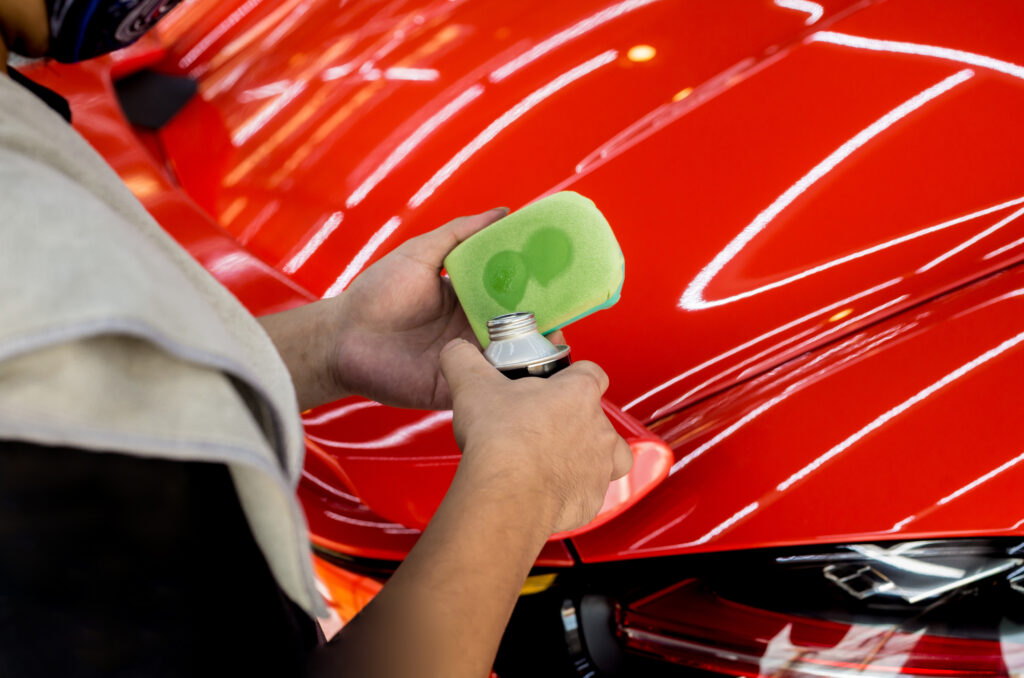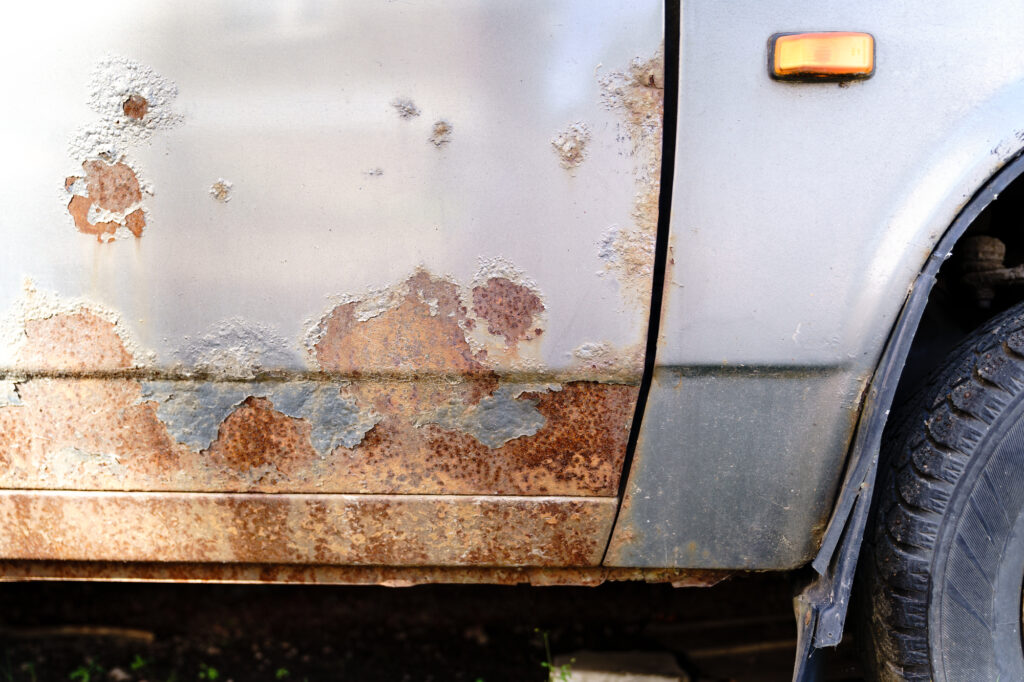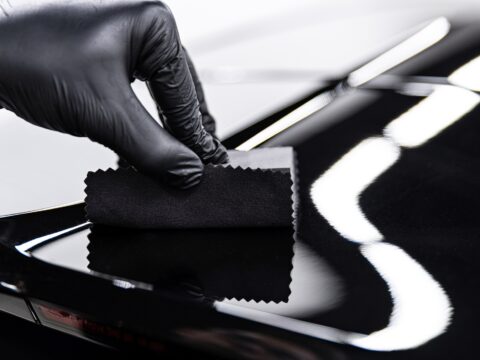Protecting the delicate parts of your vehicle ensures it runs effectively for years. And one of those delicate parts is the undercarriage. You want it to be covered by a durable coating to prevent corrosion.
Mechanics debate whether Woolwax or Fluid Film is more efficient at stopping vehicle damage. Learn what these substances are and how they help your vehicle.

Contents
What Is Woolwax?
Woolwax is an undercarriage coating substance that prevents rust from spreading. You can apply Woolwax to your car doors, frame, and undercarriage. It covers existing rust and prevents it from spreading around your vehicle. The product is very thick, so it offers a durable layer of protection on your car or truck.
People living in locations with extreme weather appreciate how Woolwax doesn’t wash off. They can drive in rain storms or on icy and snowy roads without the moisture removing Woolwax.
In these areas, the municipality puts brine, chloride, liquid calcium, or salt on the roads to prevent them from icing over. These substances won’t weaken Woolwax’s protection on your vehicle’s undercarriage.
While the consistency of Woolwax is ideal for protection, it makes application difficult. You have to warm it up before you can put it on your car because it’s so waxy. Let a professional mechanic apply Woolwax to your vehicle to simplify the process.
What Is Woolwax Made Of?
Woolwax consists of lanolin, a fat that comes from sheep. Many industries use lanolin, such as the health and beauty industry making ointment and lotion from lanolin. When you put lanolin on your skin, it seals in existing moisture.
Lanolin contains long-chain waxy esters, which is how it gets the name “Woolwax.” Since lanolin is so waxy on its own, it doesn’t need a solvent for application.
You can put Woolwax on your car’s undercarriage without worrying that it will evaporate or solidify over time. It stays waxy and seeps into small areas, making it crucial to prevent undercarriage damage.
What Is Fluid Film?
Fluid Film is a strong undercarriage coating that stops rust and prevents corrosion. It’s liquid enough to lubricate moving car parts, too. People often use it on cars, boats, and agricultural equipment.
Since it’s thinner than Woolwax, it’s easier to apply on various surfaces. Use an undercoating gun to access hard-to-reach places.
You can choose black Fluid Film to darken your vehicle’s undercarriage or prevent the product from showing up on your car. The black tint nicely covers up existing rust, so it can refresh older vehicles while preventing the spread of rust.
Fluid Film is more affordable than Woolwax. The price is excellent because it’s easy to apply yourself, saving money overall. You don’t have to pay a professional to do the job if you buy enough and use an undercoating gun.
What Is Fluid Film Made Of?
Fluid Film also uses lanolin as its base. However, the manufacturer squeezes lanolin from the sheep’s wool to make it lighter than the thicker Woolwax. That consistency makes Fluid Film a popular choice with mechanics, farmers, and construction workers who use it to lubricate nuts, bolts, levers, and gears.
However, since Fluid Film isn’t pure lanolin like Woolwax, it has a strong odor. You’ll get a strong grease smell when you spray Fluid Film on your vehicle. Also, as it’s lighter than Woolwax, you’ll need to reapply it frequently for the best protection.
Many mechanics recommend reapplication every six months, which can become expensive and time-consuming.

Woolwax vs. Fluid Film Similarities
Woolwax and Fluid Film protect vehicles’ undercarriages from rust and corrosion. Eureka Chemical Company makes both products. Find out what else Fluid Film and Woolwax have in common.
Eco-Friendliness
Any time you spray a substance or use a chemical, you want to consider the environment. Woolwax and Fluid Film have less than 1% volatile organic compounds (VOCs), so they’re safe to use.
Aerosol sprays play a part in air pollution, so applying Fluid Film in a different method would be more environmentally friendly than spraying it on the undercarriage.
Protection
Woolwax and Fluid Film both offer high-quality protection for vehicles. They coat the surface to prevent corrosion and restrict the spread of rust. Neither product dries out, so it provides long-term lubrication to your car.
Composition
Both products use lanolin as their base. Woolwax focuses more on the waxiness of lanolin, while Fluid Film thins out the lanolin to use as a spray.
Penetration
The way the manufacturer makes Woolwax and Fluid Film ensures they cover every part of your car’s undercarriage. The products lubricate even the hard-to-reach areas to keep your vehicle in good shape.
Difference Between Woolwax and Fluid Film
Though Woolwax and Fluid Film have several things in common, they also have many differences. For products made by the same manufacturer, it’s interesting to learn how they contrast. Read on to find out what features make these substances differ.
Woolwax vs. Fluid Film Features Comparison
There are several key features to compare when looking at the differences between Woolwax vs. Fluid Film.
Consistency
When you learned about Woolwax and Fluid Film ingredients, you also discovered that they have different consistencies. Despite both using lanolin, Woolwax is thick, while Fluid Film is more liquid.
Reliability
As both products have the same manufacturer, you might expect them to have the same level of reliability. However, Fluid Film’s thinner consistency means you should apply it more often. Woolwax is thick enough to last for years, even if you give your vehicle a high-pressure wash.
Shelf Life
Woolwax has an indefinite shelf life, mainly because the product doesn’t have additives that can go bad. The lanolin can last for years, though you need to warm it up to apply it. Fluid Film has a shelf life of about three years. If you buy it in bulk, make sure you use up each batch before it’s rendered ineffective.
Scent
Fluid Film has a greasy smell that takes several days to dissipate. Many people don’t like dealing with the odor, so they opt for Woolwax. Since most of Woolwax is lanolin, the product smells like hand lotion.
Application
Application methods vary due to the consistency of the products. Since Fluid Film is so light, you can spray it on the vehicle. Using an undercoating gun ensures you cover the hard-to-reach areas beneath your car. If you have the necessary supplies, you can apply Fluid Film yourself.
Since Woolwax has a thick consistency, you can’t apply it as quickly as Fluid Film. You have to let it warm up a bit to spread it around before you even go near your vehicle. For this reason, most mechanics recommend you hire a professional to coat your car with Woolwax.
Resistance
Since Woolwax goes on thicker, it’s more resistant to washing off. People who live in areas with extreme weather appreciate how long each application of Woolwax lasts. Fluid Film, on the other hand, needs replication every six months to a year because the thin consistency washes off over time.
Rust Coverage
Both Woolwax and Fluid Film prevent rust very effectively. However, Fluid Film Black provides camouflage for existing rust. You can spray the dark-tinted substance on your vehicle’s undercarriage and make it look new while preventing rust spread.
Colors
Woolwax has a honey color when you see it in the bucket. However, when you apply it, Woolwax goes on clear. This color means you can apply Woolwax to any vehicle without messing with the paint job or additional design elements.
Since it’s so thick, it won’t drip, either, so you don’t have to worry about dark splatters around your work area.
As Fluid Film also has lanolin as its base product, it has a faint honey color, too. It’s thinner than Woolwax, so you don’t see the shade as much.
That consistency also prevents the product from covering rust as completely as Woolwax. With that in mind, the manufacturer created Fluid Film Black.
The dark tint of this lubricant completely covers any rust on the metal parts of your vehicle, which is nice and helps refresh the overall look.
Unfortunately, if you have lighter paint, you might get black spray on your car. You can also end up with black stains around your work area.
Cost
Fluid Film is more affordable than Woolwax. If you own an undercoating gun, you can buy the spray cans and apply the substance yourself.
Woolwax is more expensive and takes more time to apply, even if you buy the manufacturer’s special gun.
Woolwax vs. Fluid Film Pros and Cons Table Summary
| Woolwax | Fluid Film | ||
| Pros | Cons | Pros | Cons |
| Made in the United States | Thick consistency | Made in the United States | Has a strong odor |
| Won’t wash off | Tough to apply | Light product | Won’t remove rust |
| Odorless | Requires professional application | Won’t wash off | Shelf life of three years |
| Indefinite shelf life | More expensive | Comes in a black film | Fairly expensive |
Which Is Better, Woolwax or Fluid Film?
Woolwax and Fluid Film provide exceptional undercarriage protection and rust prevention, so you can’t go wrong with either. If you want a thick wax that lasts for years and smells nice, choose Woolwax—but you’ll pay more. The affordable option is Fluid Film, which is easy to apply yourself but might stink up the garage for a few days.














